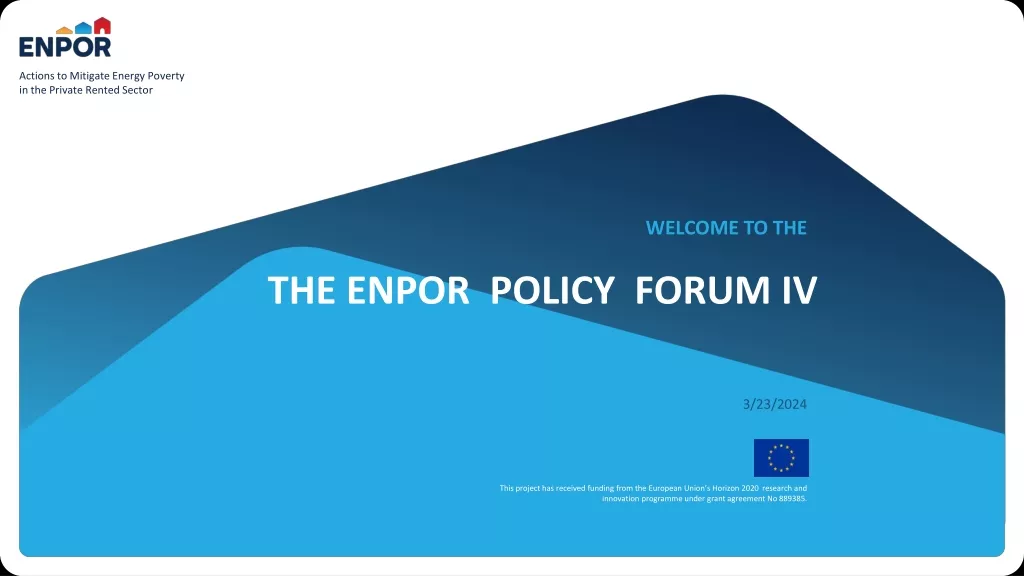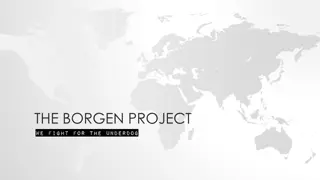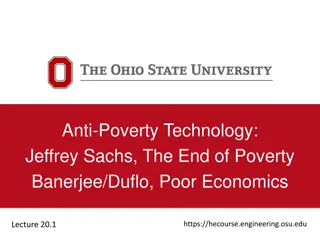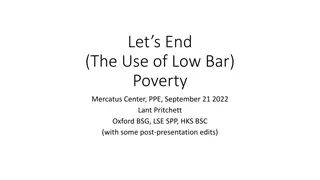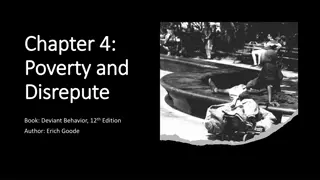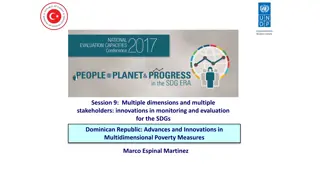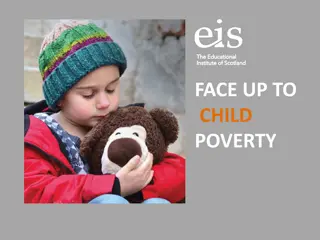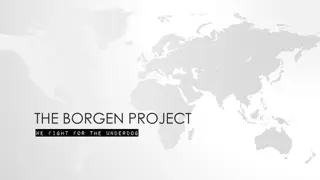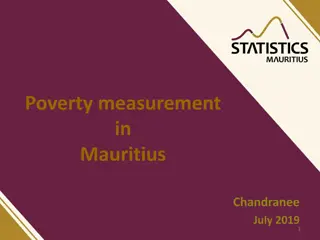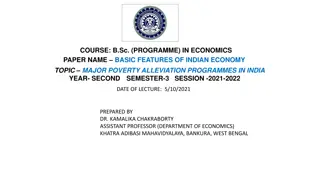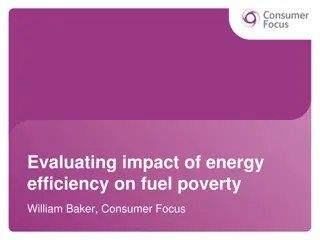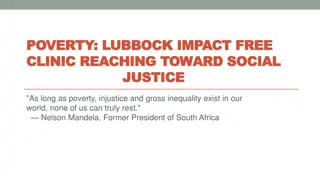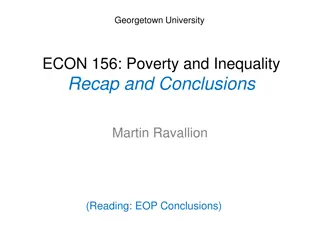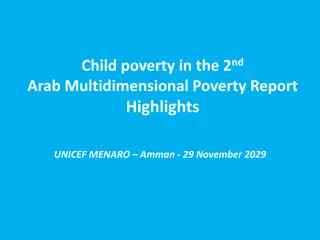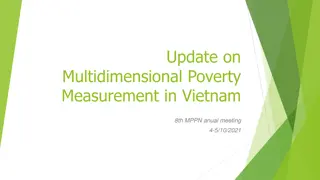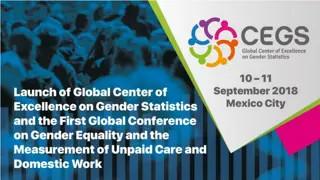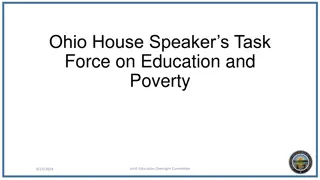
Understanding Poverty: Causes, Effects, and Solutions
Explore the various aspects of poverty, including its definition, causes, impact on children, and potential solutions. Understand how poverty affects individuals, families, and society as a whole, and learn about the importance of addressing this pressing social issue.
Download Presentation

Please find below an Image/Link to download the presentation.
The content on the website is provided AS IS for your information and personal use only. It may not be sold, licensed, or shared on other websites without obtaining consent from the author. If you encounter any issues during the download, it is possible that the publisher has removed the file from their server.
You are allowed to download the files provided on this website for personal or commercial use, subject to the condition that they are used lawfully. All files are the property of their respective owners.
The content on the website is provided AS IS for your information and personal use only. It may not be sold, licensed, or shared on other websites without obtaining consent from the author.
E N D
Presentation Transcript
StudyMafia.Org Poverty Submitted To: Submitted By: Studymafia.org Studymafia.org
Table Contents Definition Introduction Understanding Poverty Poverty and Children Causes of Poverty Solution of Poverty Conclusion 2
Definition Poverty is a state or condition in which a person or community lacks the financial resources and essentials for a minimum standard of living. 3
Introduction Poverty means that the income level from employment is so low that basic human needs can't be met. Poverty-stricken people and families might go without proper housing, clean water, healthy food, and medical attention Each nation may have its own criteria for determining the poverty line and counting how many of its people are living in poverty. 4
Understanding Poverty Poverty is a state or condition in which a person or community lacks the financial resources and essentials for a minimum standard of living. Poverty-stricken people and families might go without proper housing, clean water, healthy food, and medical attention. 6
Understanding Poverty Poverty refers to a lack of wealth or income such that individuals and households do not have the means to subsist or acquire the basic necessities for a flourishing life. This means being so poor as to struggle to obtain food, clothing, shelter, and medicines. 7
Understanding Poverty Poverty is both an individual concern as well as a broader social problem. The U.S. poverty income threshold for a family of four is $26,500 per year. Welfare programs are used by governments to help alleviate poverty. 8
Understanding Poverty Poverty is both an individual concern as well as a broader social problem. On the individual or household level, not being able to make ends meet can lead to a range of physical and mental issues. At the societal level, high poverty rates can be a damper on economic growth and be associated with problems like crime, unemployment, urban decay, lack of education, and poor health. 9
Understanding Poverty As such, governments often instate social welfare programs to help lift families out of poverty. Some countries have stronger welfare states (social safety nets) than others. The U.S., for instance, tends to be much more individualistic and shuns welfare programs. European countries, in comparison, have a much broader range of welfare programs and support for the impoverished. 10
Poverty and Children The impact of poverty on children is substantial. Children who grow up in poverty typically suffer from severe and frequent health problems; infants born into poverty have an increased chance of low birth weight, which can lead to physical and mental disabilities. 11
Poverty and Children In some impoverished countries, poverty- stricken infants are nine times more likely to die in their first month compared to babies born in high-income countries. Those who live may have hearing and vision problems. Children in poverty tend to miss more school due to sickness and endure more stress at home. 12
Causes of Poverty Access to good schools, healthcare, electricity, safe water, and other critical services remains elusive for many and is often determined by socioeconomic status, gender, ethnicity, and geography. For those able to move out of poverty, progress is often temporary. 13
Causes of Poverty Installing wells that provide access to clean drinking water Educating farmers on how to produce more food Constructing shelter for the poor Building schools to educate disadvantaged communities Providing enhanced access to better healthcare services by building medical clinics and hospitals 14
Solution of Poverty The answer to this question is complicated and nuanced. If it were easy or obvious, poverty would no longer be such a big issue. Social welfare programs and private philanthropy are ways to provide for those in poverty, along with access to essentials like clean water, good food, and adequate healthcare. 16
Solution of Poverty However, more is needed. Programs that encourage impoverished individuals to obtain skills, jobs, and education are also important as a longer-term cure. 17
Conclusion This might seem like a no-brainer: Without a job or a livelihood, people will face poverty. Dwindling access to productive land (often due to conflict, overpopulation, or climate change) and overexploitation of resources like fish or minerals puts increasing pressure on many traditional livelihoods. 18
Thanks To StudyMafia.org

